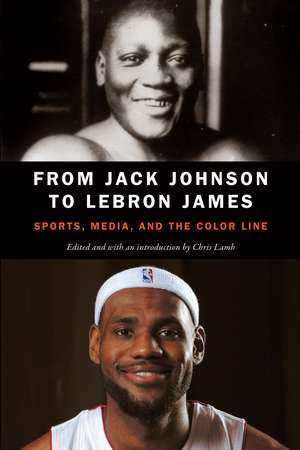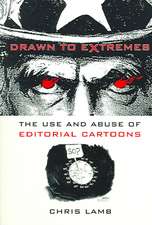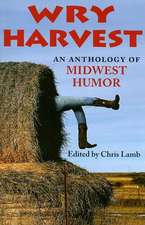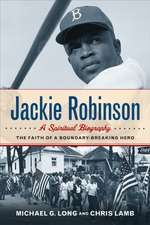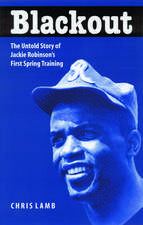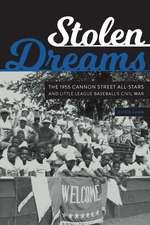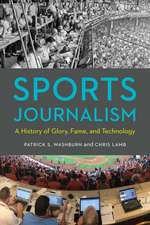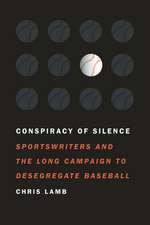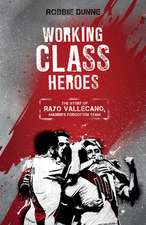From Jack Johnson to LeBron James: Sports, Media, and the Color Line
Editat de Chris Lamben Limba Engleză Paperback – 31 dec 2015
The campaign for racial equality in sports has both reflected and affected the campaign for racial equality in the United States. Some of the most significant and publicized stories in this campaign in the twentieth century have happened in sports, including, of course, Jackie Robinson in baseball; Jesse Owens, Tommie Smith, and John Carlos in track; Arthur Ashe in tennis; and Jack Johnson, Joe Louis, and Muhammad Ali in boxing. Long after the full integration of college and professional athletics, race continues to play a major role in sports. Not long ago, sportswriters and sportscasters ignored racial issues. They now contribute to the public’s evolving racial attitudes on issues both on and off the field, ranging from integration to self-determination to masculinity.
From Jack Johnson to LeBron James examines the intersection of sports, race, and the media in the twentieth century and beyond. The essays are linked by a number of questions, including: How did the black and white media differ in content and context in their reporting of these stories? How did the media acknowledge race in their stories? Did the media recognize these stories as historically significant? Considering how media coverage has evolved over the years, the essays begin with the racially charged reporting of Jack Johnson’s reign as heavyweight champion and carry up to the present, covering the media narratives surrounding the Michael Vick dogfighting case in a supposedly post-racial era and the media’s handling of LeBron James’s announcement to leave Cleveland for Miami.
From Jack Johnson to LeBron James examines the intersection of sports, race, and the media in the twentieth century and beyond. The essays are linked by a number of questions, including: How did the black and white media differ in content and context in their reporting of these stories? How did the media acknowledge race in their stories? Did the media recognize these stories as historically significant? Considering how media coverage has evolved over the years, the essays begin with the racially charged reporting of Jack Johnson’s reign as heavyweight champion and carry up to the present, covering the media narratives surrounding the Michael Vick dogfighting case in a supposedly post-racial era and the media’s handling of LeBron James’s announcement to leave Cleveland for Miami.
Preț: 272.07 lei
Nou
Puncte Express: 408
Preț estimativ în valută:
52.06€ • 56.73$ • 43.87£
52.06€ • 56.73$ • 43.87£
Carte tipărită la comandă
Livrare economică 23 aprilie-07 mai
Preluare comenzi: 021 569.72.76
Specificații
ISBN-13: 9780803276802
ISBN-10: 080327680X
Pagini: 648
Ilustrații: 8 tables, index
Dimensiuni: 152 x 229 x 39 mm
Greutate: 0.93 kg
Editura: Nebraska
Colecția University of Nebraska Press
Locul publicării:United States
ISBN-10: 080327680X
Pagini: 648
Ilustrații: 8 tables, index
Dimensiuni: 152 x 229 x 39 mm
Greutate: 0.93 kg
Editura: Nebraska
Colecția University of Nebraska Press
Locul publicării:United States
Notă biografică
Chris Lamb is a professor of journalism at Indiana University–Purdue University at Indianapolis. He is the author of Conspiracy of Silence: Sportswriters and the Long Campaign to Desegregate Baseball (Nebraska, 2012) and Blackout: The Story of Jackie Robinson’s First Spring Training (Nebraska, 2004), among other books.
Cuprins
List of Tables
Introduction
Chris Lamb
1. Framing White Hopes: The Press, Social Drama, and the Era of Jack Johnson, 1908–1915
Phillip J. Hutchison
2. Jesse Owens, a Black Pearl amidst an Ocean of Fury: A Case Study of Press Coverage of the 1936 Berlin Olympic Games
Pamela C. Laucella
3. Multifarious Hero: Joe Louis, American Society, and Race Relations during World Crisis, 1935–1945
Dominic J. Capeci Jr. and Martha Wilkerson
4. Outside the Pale: The Exclusion of Blacks from the National Football League, 1934–1946
Thomas G. Smith
5. Democracy on the Field: The Black Press Takes On White Baseball
Chris Lamb and Glen L. Bleske
6. A Nod from Destiny: How Sportswriters for White and African American Newspapers Covered Kenny Washington’s Entry into the National Football League
Ronald Bishop
7. Jackie Robinson and the American Mind: Journalistic Perceptions of the Reintegration of Baseball
William Simons
8. “This Is It!” The Public Relations Campaign Waged by Wendell Smith and Jackie Robinson to Cast Robinson’s First Season as an Unqualified Success
Brian Carroll
9. Integrating New Year’s Day: The Racial Politics of College Bowl Games in the American South
Charles H. Martin
10. Main Bout, Inc., Black Economic Power, and Professional Boxing: The Canceled Muhammad Ali–Ernie Terrell Fight
Michael Ezra
11. A “Race” for Equality: Print Media Coverage of the 1968 Olympic Protest by Tommie Smith and John Carlos
Jason Peterson
12. Sports Illustrated’s African American Athlete Series as Socially Responsible Journalism
Reed Smith
13. Rebellion in the Kingdom of Swat: Sportswriters, African American Athletes, and Coverage of Curt Flood’s Lawsuit against Major League Baseball
William Gillis
14. Chasing Babe Ruth: An Analysis of Newspaper Coverage of Hank Aaron’s Pursuit of the Career Home Run Record
Maureen Smith
15. Arthur Ashe: An Analysis of Newspaper Journalists’ Coverage of USA Today’s Outing
Pamela C. Laucella
16. Michael Jordan’s Family Values: Marketing, Meaning, and Post-Reagan America
Mary G. McDonald
17. Rush Limbaugh, Donovan McNabb, and “a Little Social Concern”: Reflections on the Problems of Whiteness in Contemporary American Sport
Douglas Hartmann
18. I’m the King of the World: Barry Bonds and the Race for the Record
Lisa Doris Alexander
19. Redemption on the Field: Framing, Narrative, and Race in Media Coverage of Michael Vick
Bryan Carr
20. Weighing In on the Coaching Decision: Discussing Sports and Race Online
Jimmy Sanderson
21. The LeBron James Decision in the Age of Obama
Jamal L. Ratchford
Source Acknowledgments
Contributors
Index
Recenzii
"Media coverage has expanded greatly since Jack Johnson put on boxing gloves to defend his heavyweight title, and a critical, sharp look at media coverage through the years is a necessary—and welcome—addition to sports literature."—Bob D’Angelo, Tampa Tribune
“This is quality scholarship that will be of interest to specialists in history, American studies, African American studies, journalism, English, media studies, sociology, and sports studies, among others.”—Trey Strecker, editor of NINE: A Journal of Baseball History and Culture and assistant professor in the Department of English at Ball State University
